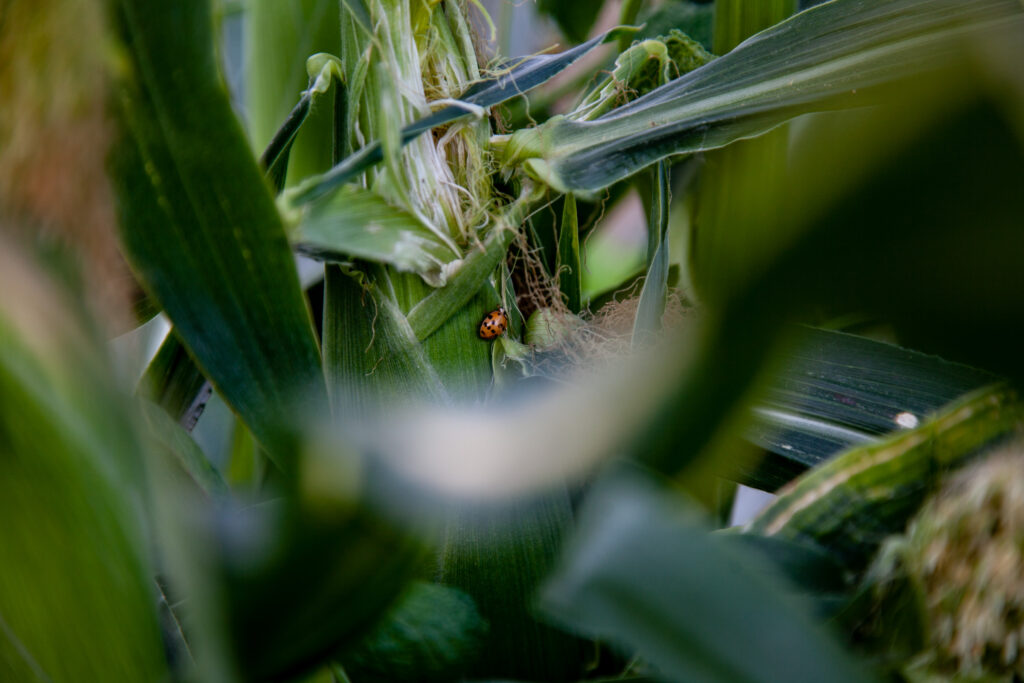I’ve been gardening for enough years now to have had my fair share of common garden pests. One year, it was box elder bugs laying hundreds of eggs over my zucchini and squash plants. Another year, blister beetles (aptly named) devoured the marigolds I’d strategically planted near my tomatoes. Last year, slug babies infested my salad blend, an event I didn’t notice until I was halfway through my dinner. And, of course, there are the usual aphids, thrips, corn earworms, and dreaded cabbage worms.
For many of us, a key point to gardening is growing food free from chemical byproducts that come from pesticides and herbicides, as well as the risk these chemicals pose to beneficial insects like bees, predatory beetles, and ladybugs. Commercial pesticides disrupt the natural balance found in healthy soil and often contain toxic ingredients. Alternatively, we can turn to common DIY insect controls: coffee grounds, crushed eggshells, manual removal, floating row covers, and soapy water all offer some level of insect prevention. But perhaps the best pest deterrent is to diversify your garden with companion planting.
First and foremost, creating a healthy garden, specifically using interplanting practices, greatly improves the quality of your soil, the overall health of your plants, and increases your ability to fight off disease and infestations. Adding extra herbs and flowers like borage, nasturtiums, marigolds, basil, sage, thyme, dill and mint (container grown) attracts beneficial bugs as well as deters many of our common pests.

The University of Minnesota reports that interplanting three or more companion crops in one space greatly improves soil quality, plant health, and pest control. Thyme, onion, and nasturtium planted alongside broccoli can greatly reduce the damage caused by cabbageworm. Basil and marigolds planted with tomatoes reduce thrips, and nasturtiums and marigolds planted near squash can deter squash bugs and cucumber beetles. Petunias attract aphids, tomato hornworms, and asparagus beetles, where the insects become trapped in the sticky stamens and die.
Some plants work at repelling insects by emitting strong smells, while others can serve as a trap crop. For example, planting nasturtiums around tomatoes or members of the brassica family helps draw cabbage moths and aphids away. Onions and garlic are also excellent insect deterrents that work the best among tomatoes, peppers, brassicas, beets, carrots, and lettuces.
Other plants work by attracting beneficial predatory bugs; cosmos, daises, sunflowers, and yarrow all attract lacewings (which devour insects like corn earworms). Fennel, dill, and coriander attract parasitic wasps. Yarrow, echinacea, sunflowers, and cosmos attract predatory soldier beetles, which prey on slugs, snails, and aphids.
Environmental writer Rachel Carson said, “In nature, nothing exists alone.” So often we get drawn into patterns of monoculture: one crop per row with no interplanting because it seems tidy and easy. But our gardens (and the natural world) benefit the greatest when biodiverse habitats flourish. In lieu of chemical bug deterrents, look into which plants you can add to your garden this summer to attract the bugs you’ll want and keep away the ones you don’t.













